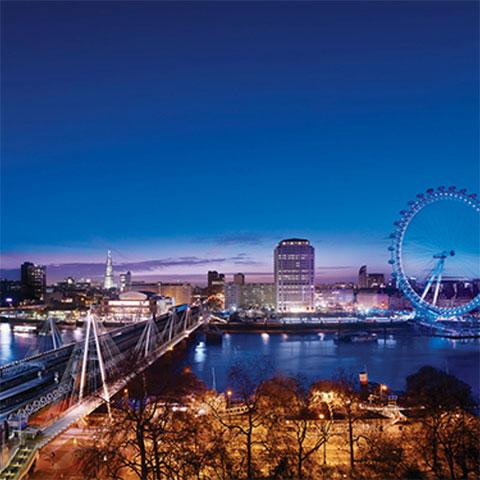London to Be UK Bastion of LED Street Light Conversion
With the Government’s target of 80 percent carbon emissions cut by 2050, it needs to do all it can to reduce the number. One of the simplest ways it can do this is by replacing all old street lights with LED replacements. Following small, successful trials, the Government has committed itself to replacing 35,000 of London’s 52,000 street lights within 10 years, making it a flagship for this kind of project here in the UK.
World Wide Pressure
With long operational times (upward of 100,000 hours), and 80-90 percent efficiency, LED lights are known to be significantly more economical and efficient compared with halogen or incandescent bulbs. This makes them an extremely attractive proposition for a nation which has a carbon emissions reduction target of 80 percent by 2050, as set in law by the European Union.
Similarly, the Government is committed to making London a city of the future. With American cities like New York and San Francisco already burning the torch for LED street lights, the British Government knows it is playing catch up.
With that said, the Government already has its own internal pressures which drive it to make the change. As an example, the air quality in London is some of the worst in the UK, with – for example – nitrogen dioxide emissions exceeding the EU-set levels by upward of 50 percent in some areas of East London.
Upgrading the Road Network for Greater Safety
Undoubtedly, there is a strong environmental component to the motive behind upgrading the capital’s street lights, but at the same time, the upgrade in light technology to LED will provide greater safety to the cyclists and motorised vehicle owners who use the streets on a regular basis.
London Mayor Boris Johnson has claimed “This is the largest investment to modernise street lighting on major roads in our capital's history and will not only cut carbon emissions and save money but will also lead to even better and safer roads for Londoners." Ultimately, the project might be relatively costly to implement initially - £10.9m, but the project is part of the Government’s “Pay for Itself” initiative, so it is expected to make back the implementation costs within 10 years as a result of electricity and maintenance savings.
With so many Londoners’ safety invested so heavily in the road infrastructure, it makes sense to make the quality of light as good and as inexpensive as possible, a sentiment Johnson echoed: "With tens of thousands of lights marking the way on our road network it makes complete sense to focus energy and resources on bringing them up to 21st-century standards”.
Gradual Roll Out and Dealing with Complaints
The project is set to take place over a ten year period, on a street by street, borough by borough basis, and as such, it can be described as a gradual roll out. Take Bromley, for example. The project will roll out across this area over 2 years, replacing 8,000 lamp posts and installing 12,000 new LED lights.
Some local people have been concerned with the idea that upgrading to LED light technology will create more light on the street late at night, preventing people from being able to sleep. This is not the case, however, as LED light bulbs are more directional than incandescents, and this means that the light is likely to be less likely to cause an issue than older light bulb types would be.
Ultimately, the Government’s roll out of LED bulbs through London is just the first stage of a nation-wide need to upgrade, though with this initial stage to take a decade to implement, the rest of the nation is not likely to receive the treatment for years.


We would like the lights at a property changed to LED lights. Please let me know if you want to make a site visit for the same and give us your opinions based on that.
Location: NW1 4QA
Sorry but we don't get involved in site visits.